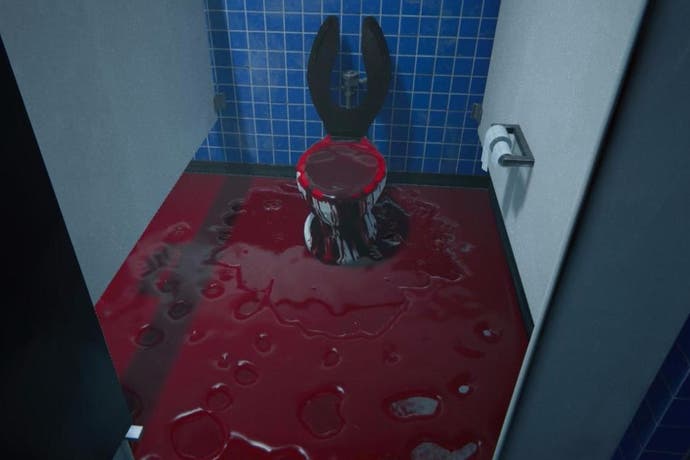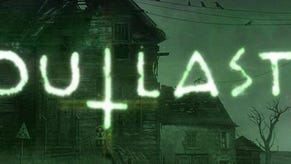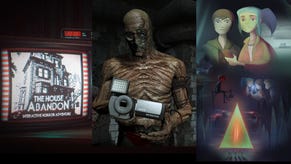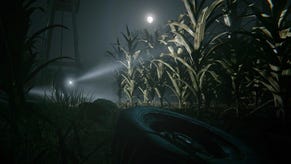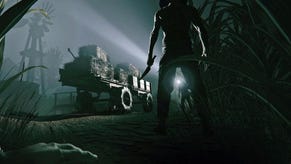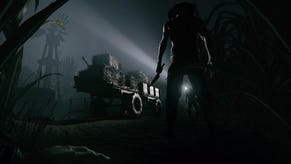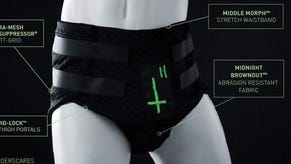Outlast 2 review
Silent hillbilly.
You'll spend much of Outlast 2 navigating by the glare of a full moon, whose light gradually shifts, in what could be a nod to Bloodborne, from chilly blue through malevolent orange to a ghastly, climatic red. The quintessential feminine symbol, it's by turns an apt and awkward thematic device for a story that is saturated with casual misogyny, in which women exist largely to be bagged, brutalised and served up as bait to yet another of gaming's dopey white knights. The new Outlast has its moments as a horror game, thanks to some neat perception dynamics, but it's exceptionally short on subtlety or charm.
The aforesaid dopey white knight is Blake Langermann, a photojournalist whose devotion to the craft is such that he'd rather film people than fend them off while they're killing him. Blake and his wife Lynn are investigating a murder in rural Arizona when their helicopter crash-lands, as helicopters do. On regaining consciousness, he discovers that Lynn has been kidnapped by the folk of Temple's Gate, a wayward and highly unhygienic Christian sect who are convinced she's about to give birth to the apocalypse. So begins a 6-10 hour nocturnal struggle to reclaim your spouse, a trek that boils down to sneaking past mucky, scripture-quoting bumpkins or running obstacle courses with said bumpkins in hot pursuit.

When not hiding in cupboards or rattling door handles, you'll also experience flashbacks to Blake's childhood, wandering around a deserted school in search of his old friend Jessica, while contending with things like blood-filled toilets and smoking, skinless phantoms. It's two damsel-in-distress quests for the price of one, and in both cases you can expect to be repeatedly tantalised with the sound and sight of your quarry's suffering - in keeping with the infantile notion that the absolute worst thing you can do to a Guy is pilfer His Woman and make her squeal.
As with the first game, Outlast 2's signature mechanic - and probably best trick - is your handicam. It's armed with a night-vision mode that is all but required for exploration, plus a scoped microphone that lets you pinpoint an unseen enemy's rough location (helpfully, Temple Gate's resident maniacs are fond of muttering to themselves as they blunder about). The catch is that night vision drains the handicam's charge in moments, so you'll need to leave it off as often as possible and keep an eye peeled for replacement batteries.
This may sound annoying, and does take a little getting used to, but the pay-off is a horror game in which you're forced to advance despite your fear, because to hang around is to slowly go blind. When skulking under a bed while an enemy searches, there's the mounting alarm of watching your battery indicator drip remorselessly away. The night-vision feature also transforms the game's already-potent environmental aesthetic, exchanging lurid torchlight and suffocating shadow for a staticky, sea-green alternate reality. Outlast's implementation of eyeshine is one of its more inspired touches - it makes the game's plentiful corpses look dreadfully alive, and leaves ambiguous how far your enemies can see as you shuffle past them in the dark.

If the handicam is a neat idea, however, Outlast 2 doesn't do much with it that the first game didn't, and the sequel's other returning core concept, your complete inability to defend yourself, is much less convincing. Generally speaking, of course, minimal combat in horror games is A Good Thing, but here the principle is taken to the point of absurdity. Later on, for instance, you find yourself in a forest near an open grave, stalked by a crawling, emaciated menace who only moves when out of view - Slender Man with a dash of Gollum. There's a beefy shovel planted in the ground by the grave, and the obvious thing to do is to take that shovel and ram it straight through your adversary's neck, but Blake is having none of it. He'd much prefer to get his ankles chewed off while scrambling under a fence.
Outcast 2 is riddled with such moments of forehead-slapping obtuseness - a guard with his back to you, peering into a crevasse, staggering plague victims who are surely only one well-aimed punch away from cardiac arrest - and the consequence is that you don't feel outmatched but artificially handicapped. It gets all the more ridiculous when you're thrown into a QTE, whereupon Blake suddenly develops the ability to swat and kick away grasping fingers, as though belatedly remembering that he's supposed to be more than a free-floating camera. You can't even barge stationary foes out of the way while sprinting - indeed, most opponents will execute you in one move if you gallop into them head-on.
The outright ban on fisticuffs might be more palatable if the stealth were consistently gripping, but for all the thrill of the handicam mechanic, Outlast 2 comes up short in this department too. The game's layouts can be quite open-ended, with a multitude of hiding spots, windows you can crawl through, and side rooms you can probe for secrets, but overcoming them usually comes down to either waiting for people to turn around or, if you're feeling bold (or bored), galloping straight through in full view.
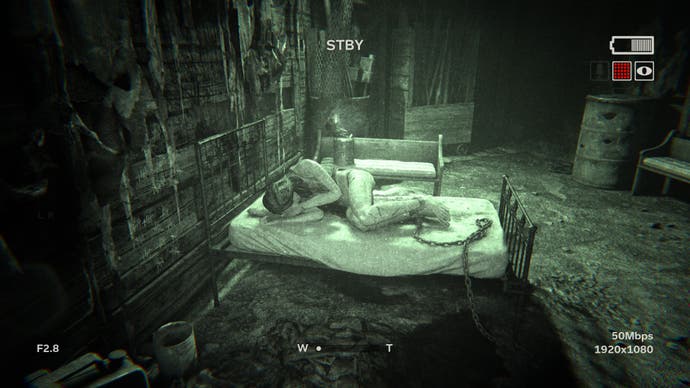
There are some fun wrinkles - doors you can bolt to stave off attackers, the occasional need to shift a heavy object while the horde is bearing down on you - but the game quickly settles into a routine, thanks to enemy design that doesn't really evolve in tandem with your skills. The scripted chase sequences have their moments - there's one where you have to run away from an elevator full of Mad Max extras in barbed-wire hats, then double back to the elevator after leading them away from it - but at the end of the day we're talking about holding down sprint till the music says you can stop.
It's a recipe for desensitisation, not terror, though the alternately ominous and teeth-rattling orchestral score does a reasonable job of tuning the mood. The game has more success with its less literal elements, and in particular the insidious way it guides the player into and out of the flashback areas. You'll clamber up something or crash through a surface only to find yourself alone in a white, silent hallway lined with blue lockers, a door creaking open invitingly in the distance. 20 minutes later, having dealt with no end of paranormal theatrics, you'll clamber into a vent and find yourself back in Temple's Gate. Integral to the eeriness of this is not knowing what your body has been up to while you've been lost in the hallucination. It's representative of an intelligence Outlast 2's deluge of festively arranged corpses and grisly, drawn-out executions strive to hide. The game's prioritising of disgust over fear is made sadly plain by one of its collectible minigames, whereby you film scenes of especially outrageous bloodshed for later perusal.
The obvious rebuttal to the charge of misogyny in Outlast 2 is that only the game's enemies hate women - spectacularly so, with no collectible diary entry or prophetic passage complete without a barrage of cheery references to rape or genitalia. But the same warped logic that governs their actions also dictates the form of the campaign. Blake's adventures rest on the notion that women are just bundles of limbs waiting to be thrown in a fridge, and men, dreary caricatures of violent possessiveness. You could object that there is, in fact, an active female character to encounter later in the game, but here the portrayal pivots with queasy predictability from "subjugated wench" to "predatory sexy lady" - a device that assumes the presence of a male player to whom the idea of female sexuality is threatening.
Even if you're happy to disregard all that, you're still left with a moderately unnerving stealth experience that plunges a fistful of good ideas into a bucket of gore. Outlast 2 is a fairly distinctive creation, even if many of the ingredients are familiar from Silent Hill, F.E.A.R. and the Amnesia series - I'd love to play a version of it that builds on the handicam concept, downplays combat without walling it off arbitrarily, and tells a more involved story than "sorry, Blake, your princess is in another charnel house". Perhaps the third time will prove the charm, but for that to happen Outlast needs to pull its head out of the gutter.
